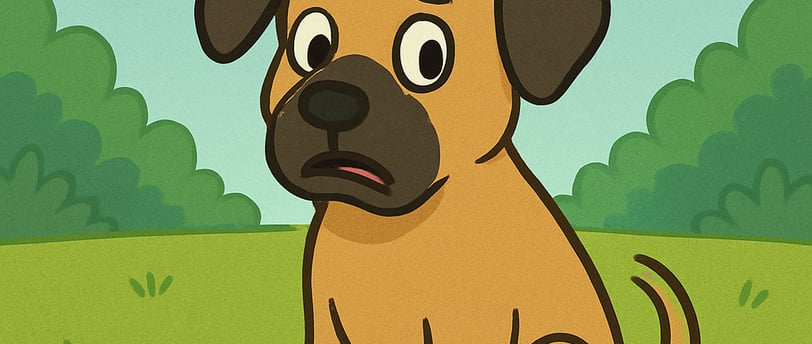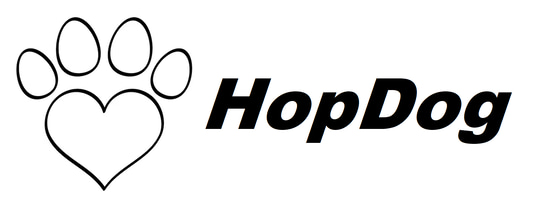Understanding Dog Body Language: What Your Pet is Telling You
Decoding your dog’s body language is a vital skill for strengthening your bond and ensuring their well-being. This guide provides an in-depth exploration of the subtle and overt cues your dog uses to communicate, helping you interpret their emotions, needs, and intentions with precision.
ARTICLES


Decoding your dog’s body language is a vital skill for strengthening your bond and ensuring their well-being. This guide provides an in-depth exploration of the subtle and overt cues your dog uses to communicate, helping you interpret their emotions, needs, and intentions with precision.
Why Understanding Dog Body Language Matters
Recognizing your dog’s signals is more than just a fun skill—it’s a cornerstone of responsible pet ownership. Misinterpreting a wagging tail as pure joy or ignoring a tucked posture as mere shyness can lead to stress, behavioral issues, or even safety risks. By mastering dog body language, you can respond appropriately to their happiness, anxiety, or warnings, fostering a trusting relationship and addressing potential problems before they escalate.
Key Elements of Dog Body Language
1. Tail Wagging
Meaning: Often associated with excitement or happiness, but context is critical.
Details: A broad, fast wag with a relaxed, circular motion typically signals joy or eagerness to play. A slow, stiff wag or one to the side may indicate uncertainty or mild agitation. A tucked tail, even if wagging slightly, often points to fear or submission. The height of the tail also matters—high and rigid can suggest dominance or alertness, while low suggests calmness or insecurity.
Tip: Pair tail movement with other body cues (e.g., ear position) for a complete picture. Breeds with naturally curled or docked tails may show variations, so focus on the wag’s intensity.
2. Ear Position
Meaning: Ears are a window into your dog’s attention level and emotional state.
Details: Erect, forward-facing ears indicate curiosity, alertness, or interest in something (e.g., a sound or movement). Flattened ears pressed against the head signal fear, submission, or discomfort, often accompanied by a lowered body. Sideways or half-raised ears might show confusion or mild interest. Note that breeds with floppy ears (e.g., Basset Hounds) may rely more on subtle tilts or tension.
Tip: Watch for rapid ear movements, which can indicate heightened awareness or nervousness.
3. Eye Contact
Meaning: Eyes reveal mood, trust, and potential aggression.
Details: Soft, relaxed eyes with slow blinks or a gentle gaze signify affection and trust, often called a “doggy smile.” A hard, unblinking stare can be a challenge or sign of aggression, especially if paired with a tense body. Whale eyes—where the whites are visible due to wide-open eyes—indicate fear or stress. Avoiding eye contact might suggest submission or discomfort.
Tip: Avoid prolonged staring contests, as dogs may perceive this as a threat, potentially escalating tension.
4. Body Posture
Meaning: The overall stance reflects confidence, submission, or readiness to act.
Details: A relaxed posture with a loose, wiggly body and neutral tail height shows contentment. A lowered body with a tucked tail and crouched legs signals fear or submission, often seen in new or intimidating situations. A stiff, upright stance with weight forward may indicate dominance or preparation to play or defend. Rolling onto the back can mean submission or a request for belly rubs, depending on context.
Tip: Sudden stiffening or freezing is a red flag—pause and assess the environment.
5. Mouth and Facial Expressions
Meaning: The mouth and face provide insight into playfulness, stress, or aggression.
Details: A relaxed, slightly open mouth with a lolling tongue is a classic sign of happiness or post-play exhaustion. Lip licking, especially without food nearby, or frequent yawning can indicate anxiety or an attempt to calm themselves or others. A closed mouth with tense lips or bared teeth (with or without growling) signals a warning or defensive stance. Play bows—front legs down, rear up—invite fun.
Tip: Watch for micro-expressions, like a quick lip curl, which may precede a growl.
6. Hair and Skin
Meaning: Changes in hair or skin texture reflect emotional arousal.
Details: Raised hackles (hair along the neck or back) indicate excitement, fear, or aggression, triggered by the sympathetic nervous system. This isn’t always negative—playful dogs may show it too. Trembling or sweaty paws (visible on paw pads) suggest stress or cold. A smooth coat with no tension typically means relaxation.
Tip: Check the whole body—hackles with a wagging tail might just mean excitement.
7. Vocalizations
Meaning: Sounds convey specific messages, from distress to warnings.
Details: High-pitched whines or whimpers often signal discomfort, loneliness, or a need (e.g., to go out). A deep, prolonged growl is a clear boundary marker, while a playful growl during tug-of-war is lighter and rhythmic. Barks vary—short, sharp barks may alert to danger, while repetitive barks could indicate boredom or excitement.
Tip: Note the pitch and frequency—higher and faster often mean urgency.
How to Interpret Combined Signals
Happy Dog: Loose, wagging tail, perked or relaxed ears, soft eyes, open mouth, and playful bounces or a play bow.
Anxious Dog: Tucked tail, flattened ears, whale eyes, lip licking, yawning, and a lowered or trembling body.
Aggressive Dog: Stiff body, raised hackles, hard stare, bared teeth, growling, and weight forward.
Playful Dog: Exaggerated movements, play bow, relaxed wagging tail, and bouncy steps.
Action: Respond with calm reassurance for anxiety, space for aggression, or engagement for playfulness.
Tips for Responding to Your Dog’s Cues
Stay Calm: Your relaxed demeanor can soothe an anxious dog—avoid loud reactions.
Reward Positive Signals: Use treats or praise for happy, relaxed postures to reinforce good behavior.
Give Space: If signs like growling or whale eyes appear, step back to de-escalate.
Observe Context: Consider recent triggers (e.g., a loud noise or new visitor) to understand their state.
Practice Consistency: Regularly acknowledge their cues to build trust over time.
Troubleshooting Common Misunderstandings
Misreading Play: Rough play with growling and nipping is normal if the tail wags and body is loose—watch for sudden stiffness.
Ignoring Stress: Persistent yawning, lip licking, or hiding may need a break, reduced stimuli, or a vet visit for underlying issues.
Overreaction: Punishing natural cues like growling can worsen behavior—identify and address the root cause instead.
Breed Variations: Short-nosed breeds (e.g., Pugs) may show less obvious ear or tail changes—focus on eyes and posture.
Frequently Asked Questions (FAQs)
Q: Can all dogs show the same body language?
A: Yes, with variations—breeds with physical differences (e.g., cropped ears, short tails) may express cues differently. Q: How do I know if my dog is scared?
A: Look for tucked tails, flattened ears, whale eyes, trembling, and avoidance behaviors. Q: Should I correct my dog’s body language?
A: No, focus on the emotion (e.g., reduce stress or increase exercise) rather than punishing the signal. Q: What if my dog’s cues change suddenly?
A: Sudden shifts (e.g., from play to stiffness) may indicate pain or a new trigger—monitor and consult a vet if persistent.
Conclusion
Understanding dog body language is a powerful tool to decode your pet’s emotions, from joyful wags to anxious trembles. By mastering tail wags, ear positions, eye contact, body posture, facial expressions, hair changes, and vocalizations, you can respond with care and prevent issues. Start today by observing your dog during a quiet moment—note their cues and adjust your approach to nurture a deeper, more empathetic connection!
